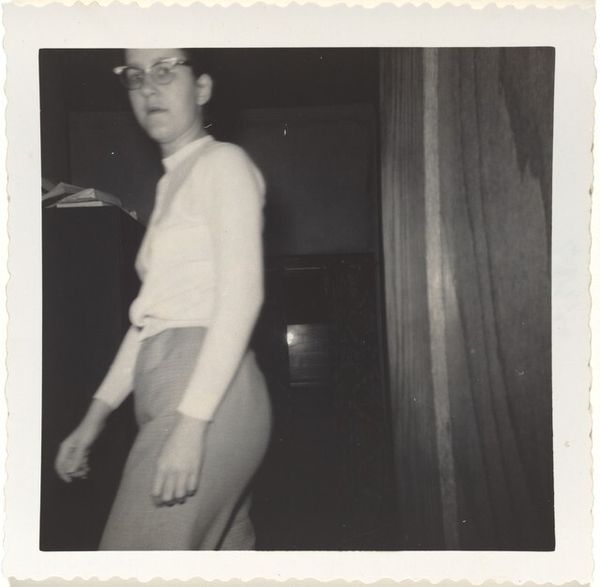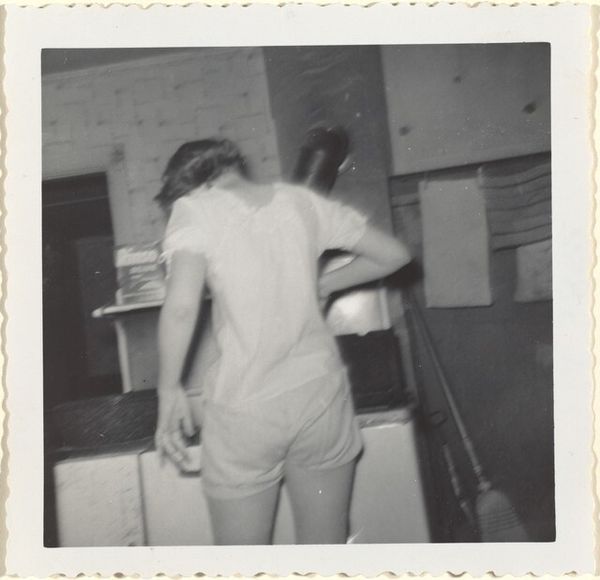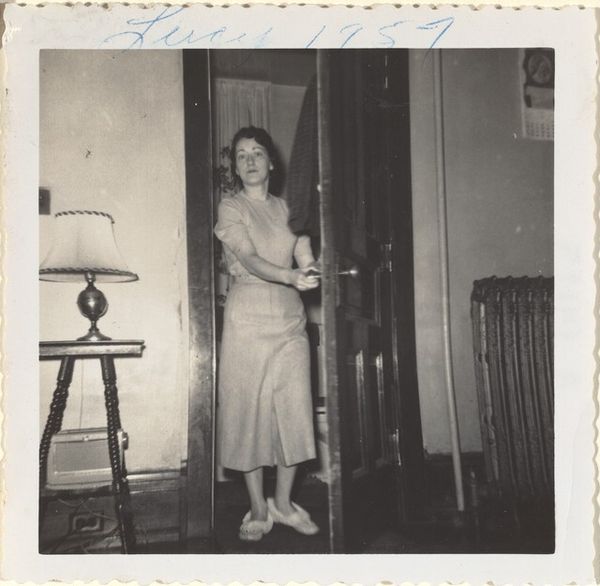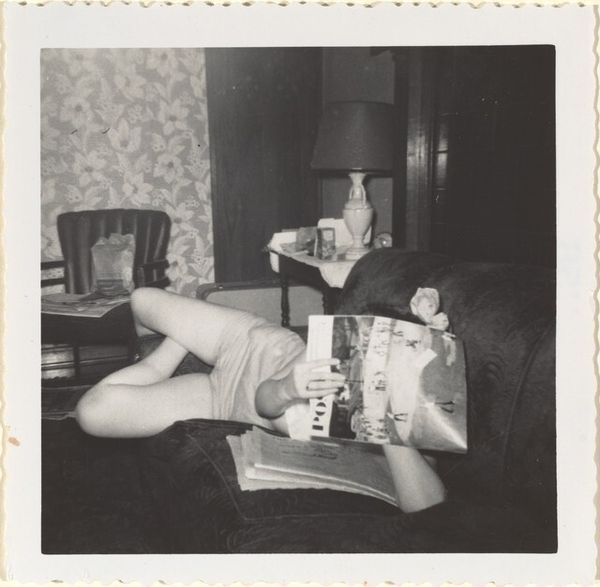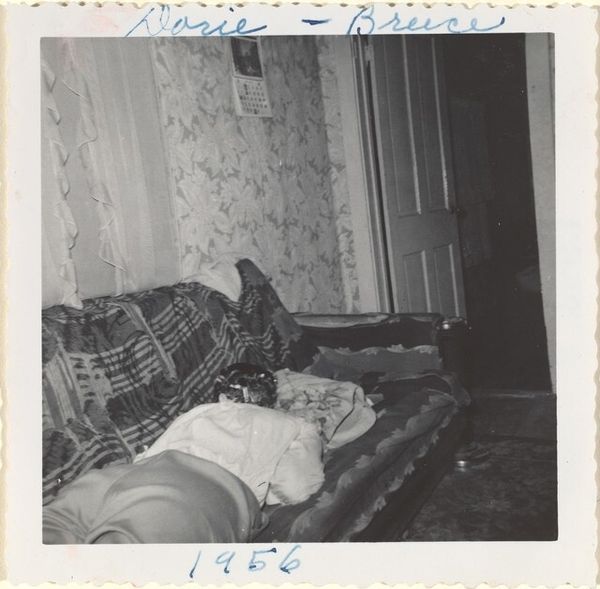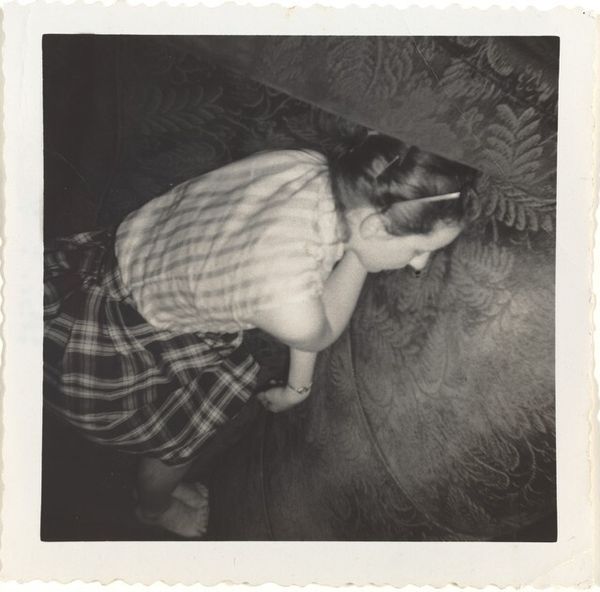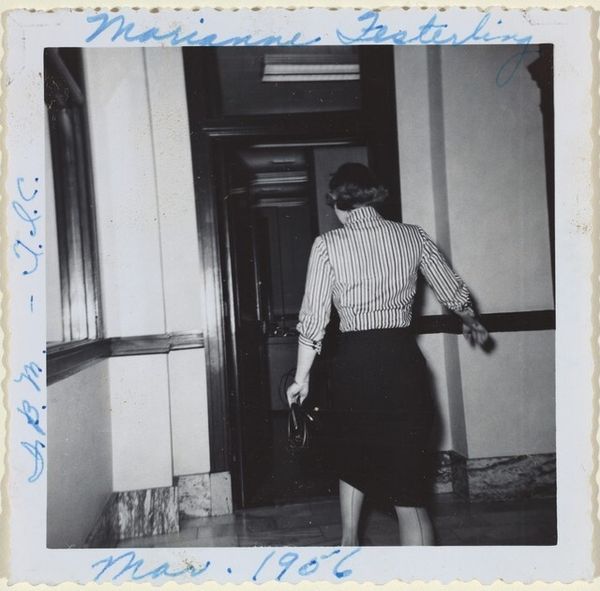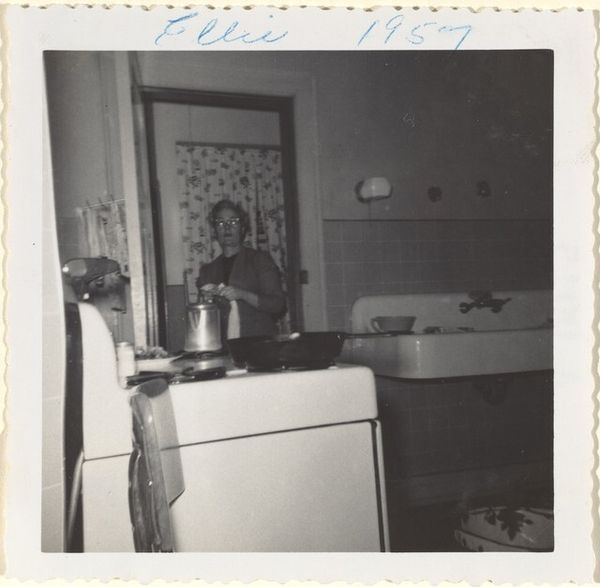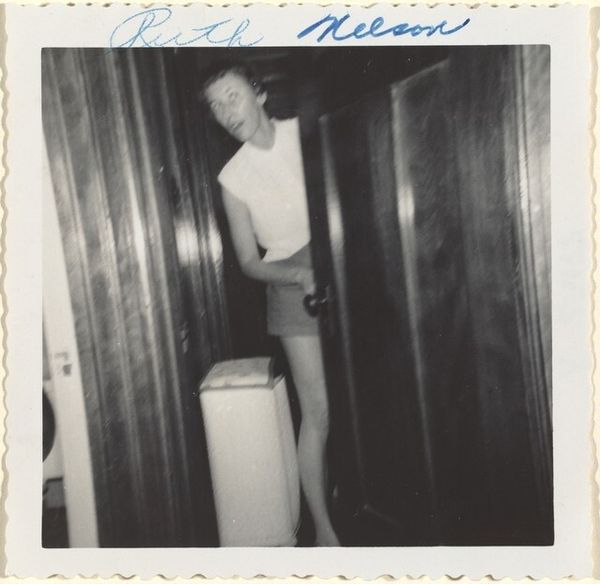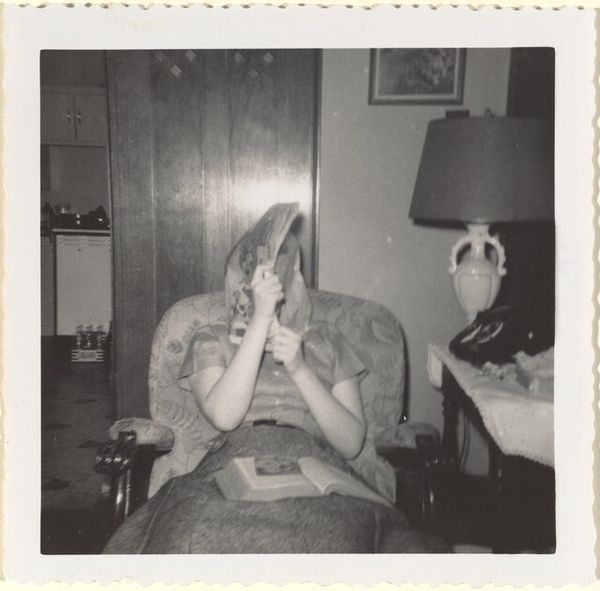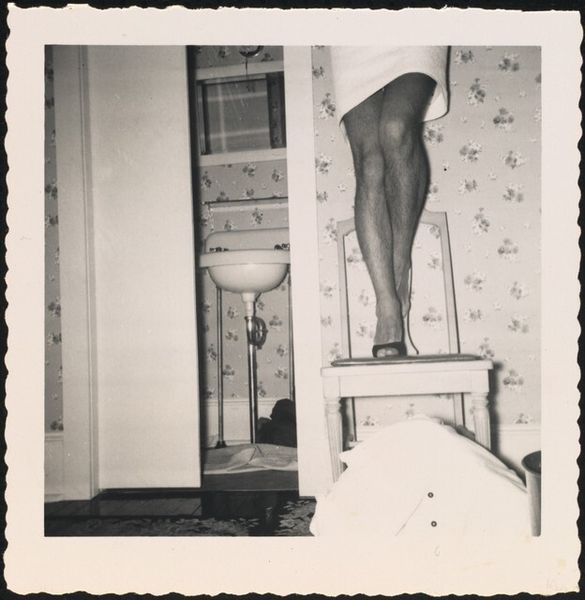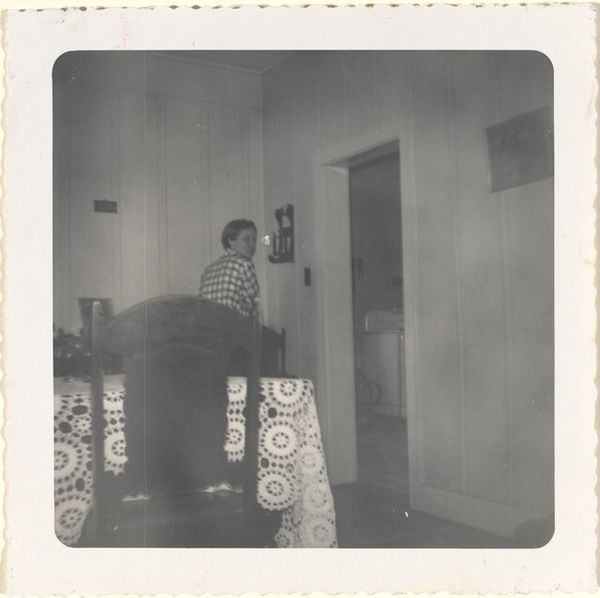
photography, gelatin-silver-print
#
portrait
#
fashion cover art
#
photography
#
historical fashion
#
gelatin-silver-print
#
nude
#
modernism
Dimensions: image: 7.6 x 7.8 cm (3 x 3 1/16 in.) sheet: 8.8 x 9 cm (3 7/16 x 3 9/16 in.)
Copyright: National Gallery of Art: CC0 1.0
Curator: We're looking at a gelatin silver print titled "C. Gaikowski," possibly from 1956. Editor: Immediately, I notice the framing and the limited grayscale. The image feels a bit voyeuristic and the composition tilts, throwing the vertical lines out of balance. It evokes a feeling of… uneasiness, maybe? Curator: I can see that. The title, handwritten on the photograph, personalizes it, hinting at a narrative beyond what we see. The woman’s dress, with its halter-like top and trailing ribbons, evokes a particular period style, doesn’t it? Something of post-war austerity, maybe a yearning for more freedom in expression. Editor: Yes, that interplay of restriction and aspiration is fascinating. The lighting isolates the white elements – the straps and ribbons – drawing your eye back and forth along those lines. The subject seems partially revealed, but then is denied with her turning. Curator: The figure, though anonymous to us now, carries echoes of iconic feminine figures from that era – perhaps even shades of Hollywood glamour refracted through everyday life. Do you see hints of vulnerability or maybe even empowerment there? Editor: Perhaps a deliberate ambiguity? The dark areas certainly contribute to this. The photograph invites you to fill in those missing features. There is an object next to her that nearly merges with her clothes—are we supposed to see an overlap of the domestic sphere into personal adornment? Curator: Possibly so! I find the gelatin-silver process, which was very common at the time, really brings out a tactile depth within the image, which contrasts so heavily with what would have been popular studio portraiture. Editor: Agreed, there’s a raw quality that's appealing. This feels more like a personal snapshot, a visual fragment pulled from a larger life story rather than staged portraiture. That informality clashes somewhat intriguingly with the elegant fashion style. Curator: Absolutely. The work really speaks to the way everyday objects and style can convey layers of cultural history, individual identity, and perhaps hidden narratives. Editor: For me, it's in the subtle nuances of contrast and texture, how they convey so much mood with such restraint. The stark simplicity creates an arresting experience.
Comments
No comments
Be the first to comment and join the conversation on the ultimate creative platform.
